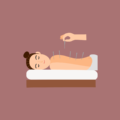
If you are 50, we need talk tendons!
You probably never gave your tendons a second thought in your 20s (if you’re lucky maybe even up to your early 40s). But if you are active in your 50s, if you are not thinking about your tendons, you’ll probably be wondering why you still have pain in your elbow, knee, ankle, hip (insert every other joint here).
Welcome to the world of tendon issues after 40, some stars of the show are tennis elbow and Achilles tendinopathy. But there are many other players in the cast.
You see, tendons don’t get as much glory as muscles. Muscles get the flexing, the compliments, the protein shakes. Tendons? They’re backstage making sure everything runs smoothly. They connect the muscle to the bones. But as we age, those quiet little cables can become stiff, frayed, and grumpy.
Why Tendons Start to Grumble with Age
As we get older, tendons get less blood flow. That means they don’t heal as quickly, they lose elasticity, and they become more prone to injury — especially if we’ve suddenly decided to “get fit again” by doing the same workouts we did in our 20s (spoiler: your tendons have not been training for that).
To make matters trickier, when we strengthen muscles too aggressively — say, through heavy lifting or bootcamp-style workouts — we can actually outpace what the tendons can handle. Imagine upgrading your car’s engine to a V8 while leaving the brakes from a tricycle in place. It won’t end well.
Enter: Tennis Elbow and Achilles Tendinopathy
Tennis elbow (even if you’ve never touched a racket) is a common form of tendinopathy affecting the outer elbow. It’s what happens when the forearm tendons get overused — from typing, lifting weights, or yes, tennis. Achilles tendinopathy, meanwhile, is the searing pain in the back of your heel that makes you walk like a penguin in the morning.
Both conditions are overuse injuries. Your tendons are waving little white flags, begging for a break — but also, ironically, begging for the right kind of stress to heal.
So What Can You Do? Show a little tenderness to your tendons. How? Patience and perseverance.
Here’s the thing: tendons like load — just not too much, too fast. What they really love is slow, controlled strengthening. Applying an isometric force (immovable object) or using light resistance over an extended period.
Now, if you are in significant pain you’ll probably need some help. Acupuncture, osteo, physio are all great modalities to treat pain for long term joint health you’ll need to do some tendon specific strength work.
But for now. Here are a few go-to moves:
For Tennis Elbow:
- Eccentric Wrist Extensor Exercise
Rest your forearm on a table, palm facing down, holding a light dumbbell (1–2 kg is fine). Use your other hand to help lift the wrist up, then slowly lower it back down over 4–5 seconds. That slow “parachute” lowering? It’s tendon gold.
For Achilles Tendinopathy:
- Heel Parachute Drops
Heel raise up and ever so slowly lower yourself back down. If you pain is OK with that they rising up with both feet, then slowly lower down just on the affected side. Don’t bounce — your tendon prefers a slow dance, not a mosh pit. - Start with 2–3 sets of 10 reps daily. Yes, it’s boring. But so is limping.
If these exercises elicit pain, back off and find a comfortable range and resistance to work in. If you can’t, get help then get to work.
Final Thoughts
Muscles are flashy, but tendons are loyal. If you treat them right — with patience, load management, and regular TLC — they’ll keep you moving smoothly for decades to come. So go easy, load slow, and remember: it’s not just about looking strong — it’s about lasting strong. Your future self (and your tendons) will thank you and keep you doing what you love in life.
– Nick





